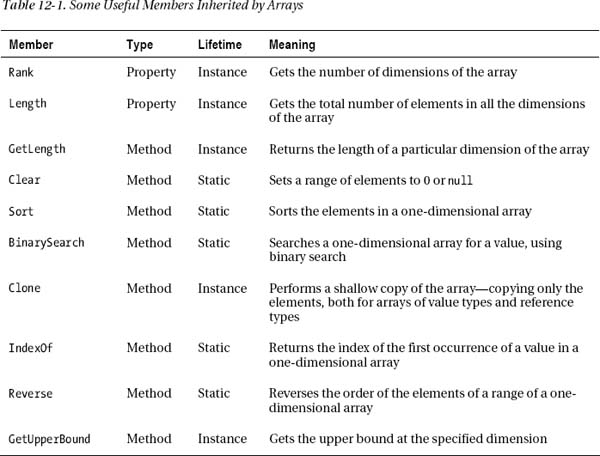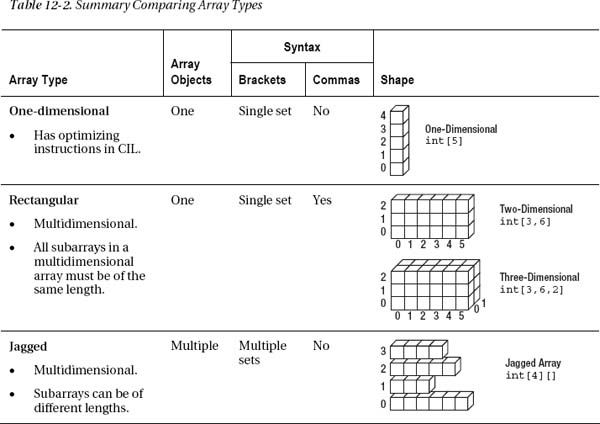C H A P T E R 12
Arrays
- Arrays
- Types of Arrays
- An Array as an Object
- One-Dimensional and Rectangular Arrays
- Instantiating a One-Dimensional or Rectangular Array
- Accessing Array Elements
- Initializing an Array
- Jagged Arrays
- Comparing Rectangular and Jagged Arrays
- The foreach Statement
- Array Covariance
- Useful Inherited Array Members
- Comparing Array Types
Arrays
An array is a set of uniform data elements represented by a single variable name. The individual elements are accessed using the variable name together with one or more indexes between square brackets, as shown here:
Array name Index
↓ ↓
MyArray[4]
Definitions
Let's start with some important definitions having to do with arrays in C#.
- Elements: The individual data items of an array are called elements. All elements of an array must be of the same type or derived from the same type.
- Rank/dimensions: Arrays can have any positive number of dimensions. The number of dimensions an array has is called its rank.
- Dimension length: Each dimension of an array has a length, which is the number of positions in that direction.
- Array length: The total number of elements contained in an array, in all dimensions, is called the length of the array.
Important Details
The following are some important general facts about C# arrays:
- Once an array is created, its size is fixed. C# does not support dynamic arrays.
- Array indexes are 0-based. That is, if the length of a dimension is n, the index values range from 0 to n – 1. For example, Figure 12-1 shows the dimensions and lengths of two example arrays. Notice that for each dimension, the indexes range from 0 to length – 1.

Figure 12-1. Dimensions and sizes
Types of Arrays
C# provides two kinds of arrays:
- One-dimensional arrays can be thought of as a single line, or vector, of elements.
- Multidimensional arrays are composed such that each position in the primary vector is itself an array, called a subarray. Positions in the subarray vectors can themselves be subarrays.
Additionally, there are two types of multidimensional arrays: rectangular arrays and jagged arrays; they have the following characteristics:
- Rectangular arrays
- Are multidimensional arrays where all the subarrays in a particular dimension have the same length
- Always use a single set of square brackets, regardless of the number of dimensions
int x = myArray2[4, 6, 1] // One set of square brackets
- Jagged arrays
- Are multidimensional arrays where each subarray is an independent array
- Can have subarrays of different lengths
- Use a separate set of square brackets for each dimension of the array
jagArray1[2][7][4] // Three sets of square brackets
Figure 12-2 shows the kinds of arrays available in C#.

Figure 12-2. One-dimensional, rectangular, and jagged arrays
An Array As an Object
An array instance is an object whose type derives from class System.Array. Since arrays are derived from this BCL base class, they inherit a number of useful members from it, such as the following:
Rank: A property that returns the number of dimensions of the arrayLength: A property that returns the length (the total number of elements) of the array
Arrays are reference types, and as with all reference types, they have both a reference to the data and the data object itself. The reference is either on the stack or in the heap, and the data object itself is always in the heap. Figure 12-3 shows the memory configuration and components of an array.

Figure 12-3. Structure of an array
Although an array is always a reference type, the elements of the array can be either value types or reference types.
- An array is called a value type array if the elements stored are value types.
- An array is called a reference type array if the elements stored in the array are references of reference type objects.
Figure 12-4 shows a value type array and a reference type array.

Figure 12-4. Elements can be values or references.
One-Dimensional and Rectangular Arrays
Syntactically, one-dimensional arrays and rectangular arrays are very similar, so I'll treat them together. I'll then treat jagged arrays separately.
Declaring a One-Dimensional or Rectangular Array
To declare a one-dimensional or rectangular array, use a single set of square brackets between the type and the variable name.
The rank specifiers are commas between the brackets. They specify the number of dimensions the array will have. The rank is the number of commas, plus one. For example, no commas indicates a one-dimensional array, one comma indicates a two-dimensional array, and so forth.
The base type, together with the rank specifiers, is the type of the array. For example, the following line of code declares a one-dimensional array of longs. The type of the array is long[], which is read as “an array of longs.”
Rank specifiers = 1
↓
long[ ] secondArray;
↑
Array type
The following code shows examples of declarations of rectangular arrays. Notice the following:
- You can have as many rank specifiers as you need.
- You cannot place array dimension lengths in the array type section. The rank is part of the array's type, but the lengths of the dimensions are not part of the type.
- When an array is declared, the number of dimensions is fixed. The length of the dimensions, however, is not determined until the array is instantiated.
Rank specifiers
↓
int[,,] firstArray; // Array type: 3D array of int
int[,] arr1; // Array type: 2D array of int
long[,,] arr3; // Array type: 3D array of long
↑
Array type
long[3,2,6] SecondArray; // Wrong! Compile error
↑ ↑ ↑
Dimension lengths not allowed!
![]() Note Unlike in C/C++, in C# the brackets follow the base type, not the variable name.
Note Unlike in C/C++, in C# the brackets follow the base type, not the variable name.
Instantiating a One-Dimensional or Rectangular Array
To instantiate an array, you use an array-creation expression. An array-creation expression consists of the new operator, followed by the base type, followed by a pair of square brackets. The length of each dimension is placed in a comma-separated list between the brackets.
The following are examples of one-dimensional array declarations.
- Array
arr2is a one-dimensional array of fourints. - Array
mcArris a one-dimensional array of fourMyClassreferences.
Figure 12-5 shows their layouts in memory.
Four elements
↓
int[] arr2 = new int[4];
MyClass[] mcArr = new MyClass[4];
↑
Array-creation expression
The following is an example of a rectangular array.
- Array
arr3is a three-dimensional array. - The length of the array is 3 * 6 * 2 = 36.
Figure 12-5 shows its layout in memory.
Lengths of the dimensions
↓
int[,,] arr3 = new int[3,6,2] ;

Figure 12-5. Declaring and instantiating arrays
![]() Note Unlike object-creation expressions, array-creation expressions do not contain parentheses—even for reference type arrays.
Note Unlike object-creation expressions, array-creation expressions do not contain parentheses—even for reference type arrays.
Accessing Array Elements
An array element is accessed using an integer value as an index into the array.
- Each dimension uses 0-based indexing.
- The index is placed between square brackets following the array name.
The following code shows examples of declaring, writing to, and reading from a one-dimensional and a two-dimensional array:
int[] intArr1 = new int[15]; // Declare 1D array of 15 elements.
intArr1[2] = 10; // Write to element 2 of the array.
int var1 = intArr1[2]; // Read from element 2 of the array.
int[,] intArr2 = new int[5,10]; // Declare 2D array.
intArr2[2,3] = 7; // Write to the array.
int var2 = intArr2[2,3]; // Read from the array.
The following code shows the full process of creating and accessing a one-dimensional array:
int[] myIntArray; // Declare the array.
myIntArray = new int[4]; // Instantiate the array.
for( int i=0; i<4; i++ ) // Set the values.
myIntArray[i] = i*10;
// Read and display the values of each element.
for( int i=0; i<4; i++ )
Console.WriteLine("Value of element {0} = {1}", i, myIntArray[i]);
This code produces the following output:
Value of element 0 is 0
Value of element 1 is 10
Value of element 2 is 20
Value of element 3 is 30
Initializing an Array
Whenever an array is created, each of the elements is automatically initialized to the default value for the type. The default values for the predefined types are 0 for integer types, 0.0 for floating-point types, false for Booleans, and null for reference types.
For example, the following code creates an array and initializes its four elements to the value 0. Figure 12-6 illustrates the layout in memory.
int[] intArr = new int[4];
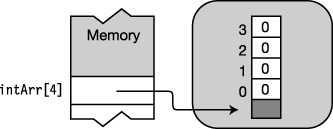
Figure 12-6. Automatic initialization of a one-dimensional array
Explicit Initialization of One-Dimensional Arrays
For a one-dimensional array, you can set explicit initial values by including an initialization list immediately after the array-creation expression of an array instantiation.
- The initialization values must be separated by commas and enclosed in a set of curly braces.
- The dimension lengths are optional, since the compiler can infer the lengths from the number of initializing values.
- Notice that nothing separates the array-creation expression and the initialization list. That is, there is no equal sign or other connecting operator.
For example, the following code creates an array and initializes its four elements to the values between the curly braces. Figure 12-7 illustrates the layout in memory.
Initialization list
↓
int[] intArr = new int[] { 10, 20, 30, 40 };
↑
No connecting operator
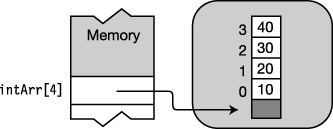
Figure 12-7. Explicit initialization of a one-dimensional array
Explicit Initialization of Rectangular Arrays
To explicitly initialize a rectangular array, you need to follow these rules:
- Each vector of initial values must be enclosed in curly braces.
- Each dimension must also be nested and enclosed in curly braces.
- In addition to the initial values, the initialization lists and components of each dimension must also be separated by commas.
For example, the following code shows the declaration of a two-dimensional array with an initialization list. Figure 12-8 illustrates the layout in memory.
Initialization lists separated by commas
↓ ↓
int[,] intArray2 = new int[,] { {10, 1}, {2, 10}, {11, 9} } ;
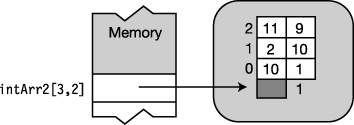
Figure 12-8. Initializing a rectangular array
Syntax Points for Initializing Rectangular Arrays
Rectangular arrays are initialized with nested, comma-separated initialization lists. The initialization lists are nested in curly braces. This can sometimes be confusing, so to get the nesting, grouping, and commas right, consider the following tips:
- Commas are used as separators between all elements and groups.
- Commas are never placed between left curly braces.
- Commas are never placed before a right curly brace.
- If possible, use indentation and carriage returns to arrange the groups so that they're visually distinct.
- Read the rank specifications from left to right, designating the last number as “elements” and all the others as “groups.”
For example, read the following declaration as “intArray has four groups of three groups of two elements.”
Initialization lists, nested and separated by commas
int[,,] intArray = new int[4,3,2] { ↓ ↓ ↓
{ {8, 6}, {5, 2}, {12, 9} },
{ {6, 4}, {13, 9}, {18, 4} },
{ {7, 2}, {1, 13}, {9, 3} },
{ {4, 6}, {3, 2}, {23, 8} }
};
Shortcut Syntax
When combining declaration, array creation, and initialization in a single statement, you can omit the array-creation expression part of the syntax entirely and provide just the initialization portion. Figure 12-9 shows this shortcut syntax.

Figure 12-9. Shortcut for array declaration, creation, and initialization
Implicitly Typed Arrays
So far, we've explicitly specified the array types at the beginnings of all our array declarations. But, like other local variables, your local arrays can also be implicitly typed. This means the following:
- When initializing an array, you can let the compiler infer the array's type from the type of the initializers. This is allowed as long as all the initializers can be implicitly converted to a single type.
- Just as with implicitly typed local variables, use the keyword
varinstead of the array type.
The following code shows explicit and implicit versions of three array declarations. The first set is a one-dimensional array of ints. The second is a two-dimensional array of ints. The third is an array of strings. Notice that in the declaration of implicitly typed intArr4 you still need to include the rank specifier in the initialization.
Explicit Explicit
↓ ↓
int [] intArr1 = new int[] { 10, 20, 30, 40 };
var intArr2 = new [] { 10, 20, 30, 40 };
↑ ↑
Keyword Inferred
int[,] intArr3 = new int[,] { { 10, 1 }, { 2, 10 }, { 11, 9 } };
var intArr4 = new [,] { { 10, 1 }, { 2, 10 }, { 11, 9 } };
↑
Rank specifier
string[] sArr1 = new string[] { "life", "liberty", "pursuit of happiness" };
var sArr2 = new [] { "life", "liberty", "pursuit of happiness" };
Putting It All Together
The following code puts together all the pieces we've looked at so far. It creates, initializes, and uses a rectangular array.
// Declare, create, and initialize an implicitly typed array.
var arr = new int[,] {{0, 1, 2}, {10, 11, 12}};
// Print the values.
for( int i=0; i<2; i++ )
for( int j=0; j<3; j++ )
Console.WriteLine("Element [{0},{1}] is {2}", i, j, arr[i,j]);
This code produces the following output:
Element [0,0] is 0
Element [0,1] is 1
Element [0,2] is 2
Element [1,0] is 10
Element [1,1] is 11
Element [1,2] is 12
Jagged Arrays
A jagged array is an array of arrays. Unlike rectangular arrays, the subarrays of a jagged array can have different numbers of elements.
For example, the code below declares a two-dimensional jagged array. Figure 12-10 shows the array's layout in memory.
- The length of the first dimension is 3.
- The declaration can be read as “
jagArris an array of three arrays ofints.” - Notice that the figure shows four array objects—one for the top-level array and three for the subarrays.
int[][] jagArr = new int[3][]; // Declare and create top-level array.
... // Declare and create subarrays.
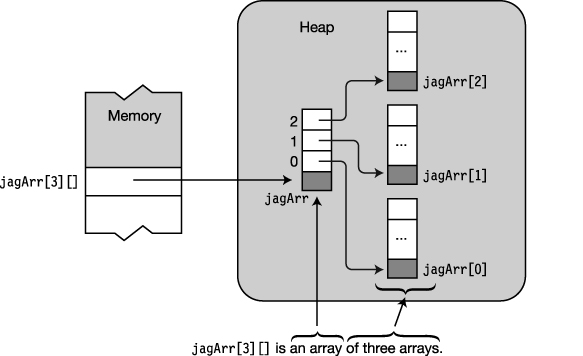
Figure 12-10. A jagged array is an array of arrays.
Declaring a Jagged Array
The declaration syntax for jagged arrays requires a separate set of square brackets for each dimension. The number of sets of square brackets in the declaration of the array variable determines the rank of the array.
- A jagged array can be of any number of dimensions greater than one.
- As with rectangular arrays, dimension lengths cannot be included in the array type section of the declaration.
Rank specifiers
↓
int[][] SomeArr; // Rank = 2
int[][][] OtherArr; // Rank = 3
↑ ↑
Array type Array name
Shortcut Instantiation
You can combine the jagged array declaration with the creation of the first-level array using an array-creation expression, such as in the following declaration. Figure 12-11 shows the result.
Three subarrays
↓
int[][] jagArr = new int[3][];
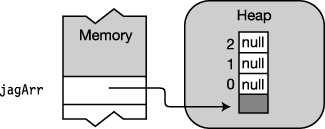
Figure 12-11. Shortcut first-level instantiation
You cannot instantiate more than the first-level array in the declaration statement.
Allowed
↓
int[][] jagArr = new int[3][4]; // Wrong! Compile error
↑
Not allowed
Instantiating a Jagged Array
Unlike other types of arrays, you cannot fully instantiate a jagged array in a single step. Since a jagged array is an array of independent arrays, each array must be created separately. Instantiating a full jagged array requires the following steps:
- Instantiate the top-level array.
- Instantiate each subarray separately, assigning the reference of the newly created array to the appropriate element of its containing array.
For example, the following code shows the declaration, instantiation, and initialization of a two-dimensional jagged array. Notice in the code that the reference to each subarray is assigned to an element in the top-level array. Steps 1 through 4 in the code correspond to the numbered representations in Figure 12-12.
int[][] Arr = new int[3][]; // 1. Instantiate top level.
Arr[0] = new int[] {10, 20, 30}; // 2. Instantiate subarray.
Arr[1] = new int[] {40, 50, 60, 70}; // 3. Instantiate subarray.
Arr[2] = new int[] {80, 90, 100, 110, 120}; // 4. Instantiate subarray.
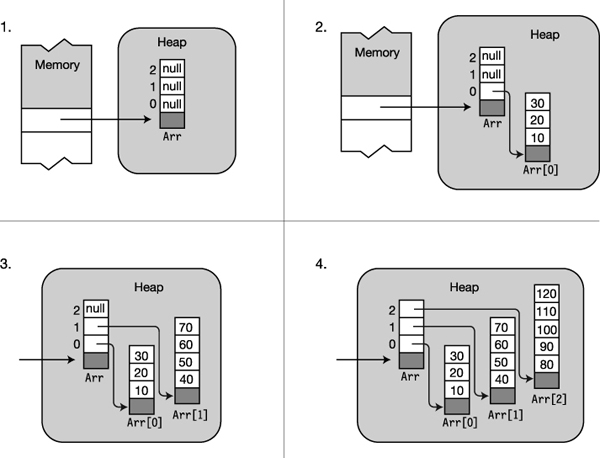
Figure 12-12. Creating a two-dimensional jagged array
Subarrays in Jagged Arrays
Since the subarrays in a jagged array are themselves arrays, it's possible to have rectangular arrays inside jagged arrays. For example, the following code creates a jagged array of three two-dimensional rectangular arrays and initializes them with values. It then displays the values. Figure 12-13 illustrates the structure.
The code uses the GetLength(int n) method of arrays, inherited from System.Array, to get the length of the specified dimension of the array.
int[][,] Arr; // An array of 2D arrays
Arr = new int[3][,]; // Instantiate an array of three 2D arrays.
Arr[0] = new int[,] { { 10, 20 },
{ 100, 200 } };
Arr[1] = new int[,] { { 30, 40, 50 },
{ 300, 400, 500 } };
Arr[2] = new int[,] { { 60, 70, 80, 90 },
{ 600, 700, 800, 900 } };
↓ Get length of dimension 0 of Arr.
for (int i = 0; i < Arr.GetLength(0); i++)
{
↓ Get length of dimension 0 of Arr[ i ].
for (int j = 0; j < Arr[i].GetLength(0); j++)
{
↓ Get length of dimension 1 of Arr[ i ].
for (int k = 0; k < Arr[i].GetLength(1); k++)
{
Console.WriteLine
("[{0}][{1},{2}] = {3}", i, j, k, Arr[i][j, k]);
}
Console.WriteLine("");
}
Console.WriteLine("");
}
This code produces the following output:
[0][1,0] = 100
[0][1,1] = 200
[1][0,0] = 30
[1][0,1] = 40
[1][0,2] = 50
[1][1,0] = 300
[1][1,1] = 400
[1][1,2] = 500
[2][0,0] = 60
[2][0,1] = 70
[2][0,2] = 80
[2][0,3] = 90
[2][1,0] = 600
[2][1,1] = 700
[2][1,2] = 800
[2][1,3] = 900
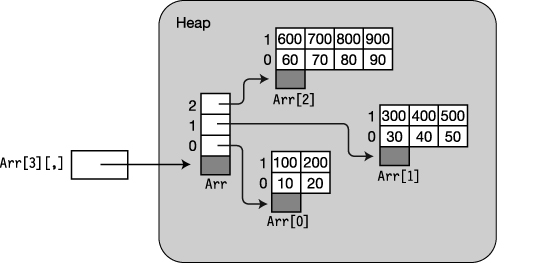
Figure 12-13. Jagged array of three two-dimensional arrays
Comparing Rectangular and Jagged Arrays
The structure of rectangular and jagged arrays is significantly different. For example, Figure 12-14 shows the structure of a rectangular three-by-three array, as well as a jagged array of three one-dimensional arrays of length 3.
- Both arrays hold nine integers, but as you can see, their structures are quite different.
- The rectangular array has a single array object, while the jagged array has four array objects.
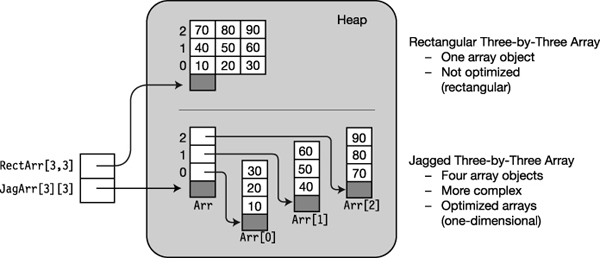
Figure 12-14. Comparing the structure of rectangular and jagged arrays
One-dimensional arrays have specific instructions in the CIL that allow them to be optimized for performance. Rectangular arrays do not have these instructions and are not optimized to the same level. Because of this, it can sometimes be more efficient to use jagged arrays of one-dimensional arrays—which can be optimized—than rectangular arrays, which cannot.
On the other hand, the programming complexity can be significantly less for a rectangular array because it can be treated as a single unit, rather than an array of arrays.
The foreach Statement
The foreach statement allows you to sequentially access each element in an array. It's actually a more general construct in that it also works with other collection types as well—but in this section I'll only discuss its use with arrays. Chapter 18 covers its use with other collection types.
The important points of the foreach statement are the following:
- The iteration variable is a temporary variable of the same type as the elements of the array. The
foreachstatement uses the iteration variable to sequentially represent each element in the array. - The syntax of the
foreachstatement is shown below, whereTypeis the type of the elements of the array. You can explicitly supply its type, or you can usevarand let it be implicitly typed and inferred by the compiler, since the compiler knows the type of the array.Identifieris the name of the iteration variable.ArrayNameis the name of the array to be iterated through.Statementis a simple statement or a block that is executed once for each element in the array.
Explicitly typed iteration variable declaration
↓
foreach( Type Identifier in ArrayName )
Statement
Implicitly typed iteration variable declaration
↓
foreach( var Identifier in ArrayName )
Statement
In the following text, I'll sometimes use implicit typing, and other times I'll use explicit typing so that you can see the exact type being used. But the forms are semantically equivalent.
The foreach statement works in the following way:
- It starts with the first element of the array and assigns that value to the iteration variable.
- It then executes the body of the statement. Inside the body, you can use the iteration variable as a read-only alias for the array element.
- After the body is executed, the
foreachstatement selects the next element in the array and repeats the process.
In this way, it cycles through the array, allowing you to access each element one by one. For example, the following code shows the use of a foreach statement with a one-dimensional array of four integers:
- The
WriteLinestatement, which is the body of theforeachstatement, is executed once for each of the elements of the array. - The first time through the loop, iteration variable
itemhas the value of the first element of the array. Each successive time, it has the value of the next element in the array.
int[] arr1 = {10, 11, 12, 13};
Iteration variable declaration
↓ Iteration variable use
foreach( int item in arr1 ) ↓
Console.WriteLine("Item Value: {0}", item);
This code produces the following output:
Item Value: 10
Item Value: 11
Item Value: 12
Item Value: 13
The Iteration Variable Is Read-Only
Since the value of the iteration variable is read-only, clearly it cannot be changed. But this has different effects on value type arrays and reference type arrays.
For value type arrays, this means you cannot change an element of the array when it's being represented by the iteration variable. For example, in the following code, the attempt to change the data in the iteration variable produces a compile-time error message:
int[] arr1 = {10, 11, 12, 13};
foreach( int item in arr1 )
item++; // Compilation error. Changing variable value is not allowed.
For reference type arrays, you still cannot change the iteration variable, but the iteration variable only holds the reference to the data, not the data itself. So although you cannot change the reference, you can change the data through the iteration variable.
The following code creates an array of four MyClass objects and initializes them. In the first foreach statement, the data in each of the objects is changed. In the second foreach statement, the changed data is read from the objects.
class MyClass
{
public int MyField = 0;
}
class Program
{
static void Main()
{
MyClass[] mcArray = new MyClass[4]; // Create array.
for (int i = 0; i < 4; i++)
{
mcArray[i] = new MyClass(); // Create class objects.
mcArray[i].MyField = i; // Set field.
}
foreach (MyClass item in mcArray)
item.MyField += 10; // Change the data.
foreach (MyClass item in mcArray)
Console.WriteLine("{0}", item.MyField); // Read the changed data.
}
}
This code produces the following output:
10
11
12
13
The foreach Statement with Multidimensional Arrays
In a multidimensional array, the elements are processed in the order in which the rightmost index is incremented fastest. When the index has gone from 0 to length – 1, the next index to the left is incremented, and the indexes to the right are reset to 0.
Example with a Rectangular Array
The following example shows the foreach statement used with a rectangular array:
class Program
{
static void Main()
{
int total = 0;
int[,] arr1 = { {10, 11}, {12, 13} };
foreach( var element in arr1 )
{
total += element;
Console.WriteLine
("Element: {0}, Current Total: {1}", element, total);
}
}
}
This code produces the following output:
Element: 10, Current Total: 10
Element: 11, Current Total: 21
Element: 12, Current Total: 33
Element: 13, Current Total: 46
Example with a Jagged Array
Since jagged arrays are arrays of arrays, you must use separate foreach statements for each dimension in the jagged array. The foreach statements must be nested properly to make sure that each nested array is processed properly.
For example, in the following code, the first foreach statement cycles through the top-level array—arr1—selecting the next subarray to process. The inner foreach statement processes the elements of that subarray.
class Program
{
static void Main( )
{
int total = 0;
int[][] arr1 = new int[2][];
arr1[0] = new int[] { 10, 11 };
arr1[1] = new int[] { 12, 13, 14 };
foreach (int[] array in arr1) // Process the top level.
{
Console.WriteLine("Starting new array");
foreach (int item in array) // Process the second level.
{
total += item;
Console.WriteLine(" Item: {0}, Current Total: {1}", item, total);
}
}
}
}
This code produces the following output:
Starting new array
Item: 10, Current Total: 10
Item: 11, Current Total: 21
Starting new array
Item: 12, Current Total: 33
Item: 13, Current Total: 46
Item: 14, Current Total: 60
Array Covariance
Under certain conditions, you can assign an object to an array element even if the object is not of the array's base type. This property of arrays is called array covariance. You can use array covariance if the following are true:
- The array is a reference type array.
- There is an implicit or explicit conversion between the type of the object you are assigning and the array's base type.
Since there is always an implicit conversion between a derived class and its base class, you can always assign an object of a derived class to an array declared for the base class.
For example, the following code declares two classes, A and B, where class B derives from class A. The last line shows covariance by assigning objects of type B to array elements of type A. Figure 12-15 shows the memory layout for the code.
class A { ... } // Base class
class B : A { ... } // Derived class
class Program {
static void Main() {
// Two arrays of type A[]
A[] AArray1 = new A[3];
A[] AArray2 = new A[3];
// Normal--assigning objects of type A to an array of type A
AArray1[0] = new A(); AArray1[1] = new A(); AArray1[2] = new A();
// Covariant--assigning objects of type B to an array of type A
AArray2[0] = new B(); AArray2[1] = new B(); AArray2[2] = new B();
}
}

Figure 12-15. Arrays showing covariance
![]() Note There is no covariance for value type arrays.
Note There is no covariance for value type arrays.
Useful Inherited Array Members
I mentioned earlier that C# arrays are derived from class System.Array. From that base class they inherit a number of useful properties and methods. Table 12-1 lists some of the most useful ones.
For example, the following code uses some of these properties and methods:
public static void PrintArray(int[] a)
{
foreach (var x in a)
Console.Write("{0} ", x);
Console.WriteLine("");
}
static void Main()
{
int[] arr = new int[] { 15, 20, 5, 25, 10 };
PrintArray(arr);
Array.Sort(arr);
PrintArray(arr);
Array.Reverse(arr);
PrintArray(arr);
Console.WriteLine();
Console.WriteLine("Rank = {0}, Length = {1}",arr.Rank, arr.Length);
Console.WriteLine("GetLength(0) = {0}",arr.GetLength(0));
Console.WriteLine("GetType() = {0}",arr.GetType());
}
This code produces the following output:
15 20 5 25 10
5 10 15 20 25
25 20 15 10 5
Rank = 1, Length = 5
GetLength(0) = 5
GetType() = System.Int32[]
The Clone Method
The Clone method performs a shallow copy of an array. This means that it only creates a clone of the array itself. If it is a reference type array, it does not copy the objects referenced by the elements. This has different results for value type arrays and reference type arrays.
- Cloning a value type array results in two independent arrays.
- Cloning a reference type array results in two arrays pointing at the same objects.
The Clone method returns a reference of type object, which must be cast to the array type.
int[] intArr1 = { 1, 2, 3 };
Array type Returns an object
↓ ↓
int[] intArr2 = ( int[] ) intArr1.Clone();
For example, the following code shows an example of cloning a value type array, producing two independent arrays. Figure 12-16 illustrates the steps shown in the code.
static void Main()
{
int[] intArr1 = { 1, 2, 3 }; // Step 1
int[] intArr2 = (int[]) intArr1.Clone(); // Step 2
intArr2[0] = 100; intArr2[1] = 200; intArr2[2] = 300; // Step 3
}
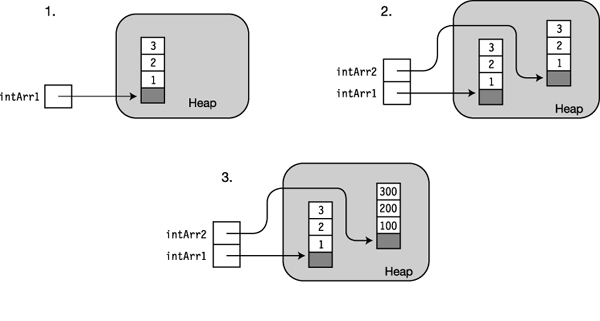
Figure 12-16. Cloning a value type array produces two independent arrays.
Cloning a reference type array results in two arrays pointing at the same objects. The following code shows an example. Figure 12-17 illustrates the steps shown in the code.
class A
{
public int Value = 5;
}
class Program
{
static void Main()
{
A[] AArray1 = new A[3] { new A(), new A(), new A() }; // Step 1
A[] AArray2 = (A[]) AArray1.Clone(); // Step 2
AArray2[0].Value = 100;
AArray2[1].Value = 200;
AArray2[2].Value = 300; // Step 3
}
}
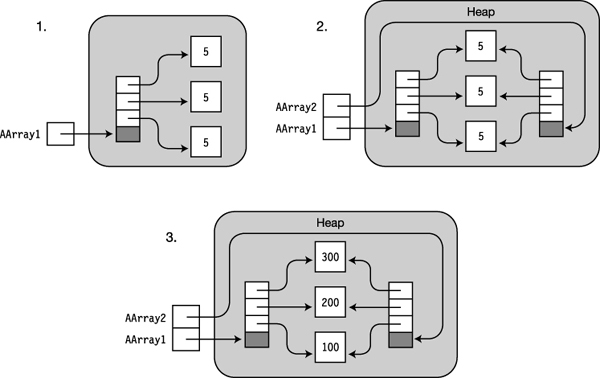
Figure 12-17. Cloning a reference type array produces two arrays referencing the same objects.
Comparing Array Types
Table 12-2 summarizes some of the important similarities and differences between the three types of arrays.

